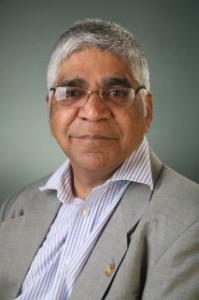 When Marty Cooper (whom I had the privilege of meeting) invented the cell phone in 1973, he could not have foreseen that he would be disproving Charles Darwin’s hypothesis. According to Darwin, from the days of the Big Bang it has taken tens of thousands of years, for a new species to evolve. Marty reduced this to four decades.
When Marty Cooper (whom I had the privilege of meeting) invented the cell phone in 1973, he could not have foreseen that he would be disproving Charles Darwin’s hypothesis. According to Darwin, from the days of the Big Bang it has taken tens of thousands of years, for a new species to evolve. Marty reduced this to four decades.
Interestingly the speed of mutation is more in the emerging economies. Today, the new species homo mobilicus (HM), numbers 5.6 out of 7bn homo sapiens (HS). The analogue fathers have given birth to digital natives whose very DNA is now “mobilicus.”
To HS, chips were something one ate, discs were part of the spinal column, the tablet was something a doctor prescribed, semi conductors were people wishing they were heading an orchestra and out of sight was out of mind – to HM these have a totally different connotation.
A PhD student based in the US insisted that her mother, based in India, consulted me for a brain scan because there were too many new errors in the emails she was now receiving from her . The scholar was right. A benign tumour was diagnosed. I had never seen such a presentation when treating HS.
Two trillion text messages a year, a 350 BP device to store the entire collection of the world’s recorded music, a social network which at 950 million makes it the largest country for HM. 40% of this new species are hyperconnected.
According to Eric Topol, today’s youngsters use seven different devices, nine different applications to stay screen connected, in restaurants, in bed and even in places of worship. In 2011 300,000 apps were downloaded 6.5bn times, for the iPhone alone. 90% of HM sleep with their phones.
There are more mobile phones on terra firma than toothbrushes, and, of course, toilets. Today’s mobile computing device connects one everywhere, to a library, a bank, a calculator, radio, TV, alarm clock, photo album, watch, camera, video recorder and flashlight. Soon to function as a hospital and laboratory, it can store more information than the Encyclopedia Brittanica .
Of course, it can also make phone calls! HM will use cars with sensor systems that continuously monitor the driver’s physiological parameters. Such data will prompt the ignition to shut down and call the police automatically. Preternaturally on the move, HM is part of a peripatetic culture. If India’s Congress Party comes back to power in 2014, it has promised BPL (Below Poverty Line) laptops as freebies to get votes.
My great great grandchildren will discuss how HS had different neural activation pathways. They would be astonished to know that we actually stored information in our cortex, retrieving them instantaneously, not by asking smartphone – and not outsourcing our brain to the cloud. HM uploads 24 hours of video content every minute or three billion videos per day. This is in addition to 2000 tweets per second – numbering 200m in 2011 alone. Facebook has 90 billion photos.
If HM watches videos for 24 hours a day it would take a 1000 years to see all videos presently on YouTube. HM has inside his pocket a computing device, a thousand times more powerful, ten thousand times less expensive than the one HS had – the HS device occupied three floors, of course.
The Nobel Peace prizewinner Muhammad Yunus said it all when he observed that the best way of avoiding poverty is to give everyone a mobile phone. Subsequent studies have confirmed that rises in GDP are also related to mobile penetration.
HM will ensure that every doctor’s “score” and entire horoscope is updated in real time on the internet, making available a global selection. Tomorrow’s “netizen” will ensure international medical licensure. A World Medical Council would arch over the National Medical Councils. Distance will become meaningless and geography will become history!
Epilogue
2027 – Overheard at a lunar colony called Heaven “— this is preposterous. It is taking 1.5 seconds just to transmit a few zetabytes of video info to Chennai. I do know, that in 1960, HS waited 8 hours for a Chennai Delhi voice call – but…”
“Well, my great grandfather of that species used to remark that they could connect to Heaven immediately” . ‘How?” . “Because, it was a local call.”
If only I could get into a time machine and go back to the original heaven.
Krishna Ganapathy is a neurosurgeon and telemedicine specialist who was a former secretary and past president of the Neurological Society of India. He was also secretary general of the Asian Australasian Society of Neurological Surgery.
A past president of the Telemedicine Society of India, he is currently President of the Indian Society of Stereotactic and Functional Neurosurgery.
See also: India in Edinburgh
